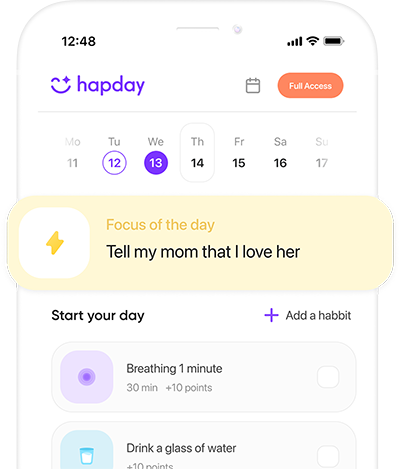When someone mentions Attention Deficit Hyperactivity Disorder (ADHD), the conversation usually circles around inattention, hyperactivity, and impulsive behavior. Yet, another aspect lurking in the shadows often catches those with ADHD off guard: burnout. ADHD burnout manifests as physical, mental, and emotional fatigue, uniquely affecting individuals who constantly battle this condition. Often fueled by unrelenting stress and the arduous task of fitting into society’s “normal” mold, it takes its toll. It’s vital to shine a light on this challenge for better recovery and life quality. Today, let’s examine five clear signs of ADHD burnout, throw in a few strategies for swift recovery, and inspire Gen Z and Millennial women to steer their mental well-being with purpose.
Table of Contents
- Understanding ADHD Burnout
- Sign 1: Chronic Fatigue
- Sign 2: Emotional Instability
- Sign 3: Decreased Motivation
- Sign 4: Impaired Cognitive Function
- Sign 5: Increased Anxiety and Depression
- Recovery Strategies and Prevention of ADHD Burnout
- Conclusion
- References
Understanding ADHD Burnout
Before listing ADHD burnout’s tell-tale signs, we need to touch on how ADHD disrupts daily routines. It hijacks executive function—skills like memory, organization, and emotional regulation—leading to stress and exhaustion. Especially prevalent when aligning with neurotypical standards seems insurmountable. Remember the statistic from the CDC about 4.2% of adult women grappling with ADHD? It’s a startling number, often accompanied by late diagnosis (CDC, 2021).
Sign 1: Chronic Fatigue
The relentless beast known as chronic fatigue stands out in ADHD burnout. This isn’t your everyday tiredness; no amount of rest seems to shake it off. A fascinating finding in the Journal of Attention Disorders pointed out that adults with ADHD suffer from fatigue notably more than their non-ADHD peers (Bijlenga et al., 2013).
Why Chronic Fatigue Occurs
The constant mental gymnastics required to tackle symptoms often result in chronic fatigue. Focusing on everyday tasks becomes exhausting and interferes with every facet of life.
Strategies for Managing Chronic Fatigue
- Prioritize Sleep Hygiene: Creating a sleepy sanctuary and sticking to a sleep schedule can work wonders. The National Sleep Foundation recommends aiming for a solid 7-9 hours (Hirshkowitz et al., 2015).
- Practice Mindfulness: Mindfulness meditation could cut fatigue and enhance mental sharpness. A study once highlighted its potential to reduce mental tiredness (Kabat-Zinn, 2013).
- Scheduled Downtime: Plan specific breaks for rest and rejuvenation—an antidote to burnout.
Sign 2: Emotional Instability
Experiencing waves of emotional instability—mood swings, irritability, heightened sensitivity? That’s a hallmark of ADHD burnout. Emotionally charged responses can become even more intense amidst burnout.
Why Emotional Instability Occurs
Burnout compounds ADHD’s effect on emotions, making them even harder to rein in. All that built-up stress and fatigue can exacerbate reactions.
Strategies for Managing Emotional Instability
- Cognitive-Behavioral Therapy (CBT): It’s touted for treating emotional instability linked with ADHD. A definitive meta-analysis in Clinical Psychology Review vouched for CBT’s ability to reduce emotional struggles (Knouse et al., 2017).
- Mindfulness Practices: Techniques like deep breathing? They’re like hitting pause on emotional chatter.
- Journaling: Putting feelings into words can unravel emotions, providing clarity and calm.
Sign 3: Decreased Motivation
A dip in motivation is another sign that burnout is at play. Tasks you used to tackle with gusto? Suddenly, they seem too daunting to even start.
Why Decreased Motivation Occurs
Physical and mental exhaustion from burnout plays a role, along with typical ADHD-related neurotransmitter imbalances.
Strategies for Managing Decreased Motivation
- Break Tasks into Smaller Steps: Bite-sized tasks can feel less intimidating.
- Use Reward Systems: Rewards can ignite the motivation to finish tasks. Evidence suggests they work well for those with ADHD (Sonuga-Barke, 2008).
- Goal Setting and Planning: Focus on making goals clear and achievable. Planning paves the way for motivation and concentration.
Sign 4: Impaired Cognitive Function
Facing cognitive fog—trouble with memory, decision-making, concentration? ADHD burnout may be the culprit.
Why Impaired Cognitive Function Occurs
Stress from burnout hampers the brain’s ability to process information. Combine that with the executive function hurdles that come with ADHD, and the result isn’t surprising.
Strategies for Managing Impaired Cognitive Function
- Cognitive Exercises: Engage in puzzles or memory games. They’re a workout for the brain.
- Healthy Lifestyle Choices: A balance of good diet, exercise, and hydration keeps brain health in check.
- Limit Multitasking: Concentrating on one thing at a time could boost efficiency.
Sign 5: Increased Anxiety and Depression
Anxiety and depression tend to spiral during burnout. The Journal of Affective Disorders once noted an increased tendency for these conditions in adults with ADHD (Instanes et al., 2018).
Why Increased Anxiety and Depression Occur
Burnout doesn’t just amplify ADHD symptoms; it amplifies mental health challenges, making them tough to manage.
Strategies for Managing Anxiety and Depression
- Professional Therapy: Engaging with a specialist versed in ADHD can provide direction and clarity.
- Exercise Regularly: It’s known to curb anxiety and depression. Those endorphins have a way of picking up spirits (Callaghan, 2004).
- Social Support: Turning to friends, family, or support circles can alleviate isolation’s weight.
Recovery Strategies and Prevention of ADHD Burnout
A thoughtful, well-rounded approach is key for bouncing back from burnout. Ongoing ADHD management and stress reduction tactics can thwart future occurrences.
Comprehensive Recovery Plan
- Seek Professional Guidance: Partner with a therapist or psychiatrist to tailor recovery.
- Medication Management: Sometimes meds can help steer symptoms and aid recovery.
- Develop Coping Mechanisms: Cultivate skills, like time management, or embrace relaxation techniques, for everyday hurdles.
- Establish Boundaries: Guard personal and professional life against overburdening demands.
- Practice Self-Compassion: Be gentle with yourself; burnout recovery is more of a marathon than a sprint.
Conclusion
ADHD burnout… it’s a significant hurdle for many living with the condition. But recognizing its signs and taking action can empower Gen Z and Millennial women to elevate their mental health game. Recovery is within reach—with the right tools and support.
Acknowledging ADHD burnout and moving towards recovery could reshape one’s life for the better. Should you seek personalized guidance on mental health, do check out resources like Hapday. Explore how Hapday could support your mental wellness journey by visiting here.
References
- Bijlenga, D., van Someren, E. J., Gruber, R., & Bron, T. I. (2013). Sleep in adult ADHD: A comparison with borderline personality disorder, major depressive disorder, and healthy controls. <

